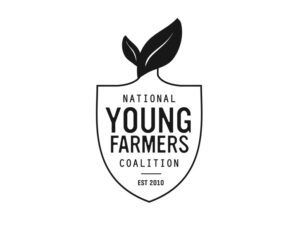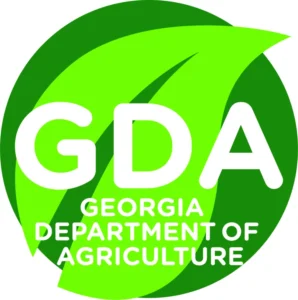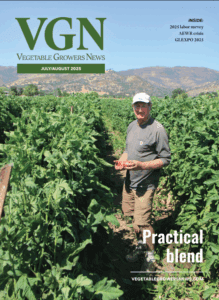May 22, 2025Budget bill clears House by one vote, moves to Senate
The massive budget bill dubbed the One Big Beautiful Bill passed the U.S. House early Thursday morning after more than 24 hours of debate that began at 1 a.m. Wednesday.
The mega bill, which Republicans are attempting to pass through the budget reconciliation process to bypass a Democratic Senate filibuster, would add $60 billion in farm bill programs to the agriculture portion. That funding would come from a controversial overhaul to the Supplemental Nutrition Assistance Program and other contested cuts that would help finance a $3.8 trillion extension of President Donald Trump’s 2017 tax cuts.
On May 20, the Congressional Budget Office said that Americans in the lowest tenth of earners will lose money under the measure while the top 5% of earners will see a tax cuts of $117.2 billion, more than 20% of the tax cuts in the bill.
The legislation passed the House 215-214-1 after moving through the budget and rules committees earlier this week. The CBO estimated it will add $2.4 trillion over 10 years to the national debt, which already exceeds $36 million.
Social safety net programs including SNAP would be slashed by more than $1 trillion over the next decade, with nearly $500 billion cuts to Medicare possible to keep the national deficit within legal limits. CBO projected that Medicaid coverage could be stripped from 8.7 million people and lead to 7.6 million more uninsured people over the 10-year period.
The bill now goes to the Senate, where some Republicans have voiced opposition. Congressional leaders want the bill on Trump’s desk by July 4.
Cuts breakdown
The SNAP cuts, along with Medicaid cuts debated by the House Energy and Commerce Committee, have drawn opposition. The cuts would shift some federal SNAP spending to states for the first time in the history of the program, which helps to feed more than 40 million low-income Americans.
Planned changes also include a plan to limit future benefits increases and new work requirements.
On May 14, the House Agriculture Committee reported the package out of committee.
According to analysis from Politico, the ag committee cuts include:
- Forcing states to pay for part of SNAP benefits based on their payment error rates saves $128 billion.
- Changing work requirements, waivers and other criteria for SNAP recipients who are able-bodied adults without dependents saves $92 billion.
- Limiting future updates to the Thrifty Food Plan, the basis for calculating SNAP, saves $37 billion.
- Forcing states to pay for more of SNAP administrative costs saves $27 billion.
- Restrictions on participants including internet costs in computing shelter expenses saves $11 billion.
- Requiring state agencies to use indications of SNAP overpayments to prevent overpayments of other federal and state benefits saves $7 billion.
- Closing an internet utility loophole for SNAP participants who are not elderly or disabled saves $6 billion.
- Scrapping the National Education and Obesity Prevention Program for SNAP participants saves $5 billion.
- Reducing the tolerance level for SNAP error payments from $37 to $0 saves $80 million.
Changing the general SNAP work requirement age from over 15 and under 60 to over 17 and under 65 does not affect direct spending.
Georgia Agriculture Commissioner Tyler J Harper issued the following statement applauding the U.S. House of Representatives’ passage of President Trump’s One Big Beautiful Bill, which now heads to the Senate for consideration.
“President Trump’s Big Beautiful Bill is a much-needed win for Georgia Farmers and American Agriculture after four years of failure under President Biden,” said Georgia Agriculture Commissioner Tyler J Harper. “I am grateful to every Georgia member who voted in favor, and I urge Senators Ossoff and Warnock to put partisan politics aside and support this critical legislation.”

Industry reaction
“As very positive news, the spending package that cleared committee includes not only program crop spending but also enhancements to key Specialty Crop Farm Bill Alliance priorities,” National Potato Council CEO Kam Quarles said in a May 16 statement.
Those funding enhancements include:
- Specialty Crop Research Initiative: $175 million per year (an increase from $80 million)
- Specialty Crop Block Grant Program: $100 million per year (and increase from $85 million)
- Adjusted Gross Income: The limitation is eliminated if 75% or more income is derived from farming
- Market Access Program: $200 million (a 100% increase)
- Section 7721 – Pest and Disease programs under Plant Protection Act: $90 million per year (an increase from $75 million)
“The current lack of a modern farm bill remains concerning, particularly for the fruit and vegetable sector within specialty crops. Our industry has undergone more significant transformations since the 2018 farm bill than any other part of agriculture,” Quarles said. “The landscape for specialty crop growers is drastically different today compared to when the last farm bill was enacted, and we continue to urge Congress to provide growers the modern tools they need through a comprehensive, bipartisan farm bill.”
Quarles is co-chair of the Specialty Crop Farm Bill Alliance, a national coalition of more than 150 organizations representing growers of fruits, vegetables, dried fruit, tree nuts, nursery plants and other products. The SCFBA also applauded specialty crop investments in the reconciliation package in a May 13 statement.
“Although our strong preference is to enact agriculture policy in the context of a comprehensive bipartisan farm bill, we appreciate the chairman’s (ag committee chair Glenn “GT” Thompson) long-standing support of our industry and for seizing this opportunity to support America’s specialty crop growers,” the statement said.
The National Young Farmers Coalition condemned the proposed cuts in a May 15 statement.
“This budget proposal is a betrayal of the values that sustain our food system. These are not the investments young farmers need,” said Erin Foster West, policy campaigns director of the National Young Farmers Coalition. “Instead of passing a bipartisan farm bill that builds resilience for farmers and families alike, this bill fast-tracks harmful cuts to nutrition programs that serve as both a safety net for families and a revenue stream for farmers. It trades long-term food security for short-term austerity.”
The International Fresh Produce Association has encouraged a focus on increasing access to and consumption of fresh fruits and vegetables in SNAP discussions. Mollie Van Lieu, IFPA vice president of nutrition and health policy, recently told The Packer that SNAP serves 42 million people a year with an average monthly benefit of about $211 per person, which breaks down to $60 a day or $6 per meal.
Van Lieu has also called for data showing that people would spend more money on fruits and vegetables before supporting proposed SNAP restrictions to soda and candy.
In March, the organization submitted policy recommendations (.pdf) to the Make America Healthy Again Commission reinforcing its commitment to improving public health nationwide and reducing diet-related diseases.


















